Rethinking apocalypse and other brief reviews
Rituals of Transition:
Someone said: we do not live in quarters like a corporate calendar, we live in seasons, as in, the earth’s rotation that shapes regional light, plant and animal life cycles. What to make of seasons in the Anthropocene, amid expedited spring melt, flooded harvests, prolonged wildfires?
Arguably, these changes arose from the success of splitting measured and seasonal time – the coordination of clocks across longitudes, allowing imperial ships to dock in far flung continents, syncing the financial markets, allowing industrialization to unfold to the rhythm of a factory whistle. Calendars and clocks are very old, but they have really aided the malignant pace of violent extraction/production/consumption these last 5 centuries.
Calendar time divorced from regional climate means cycles are dictated by the artifice of work, school, and advertisement. Close the pools on labor day, even though the heat persists; clothing cycles are set by industry rather than temperature; the call to harvest is replaced by coffee beans in the flavor of gourds.


Is it a minor acts of resistance to claw out anything mystical? Or just more consumption? Mercury and Venus were in retrograde at the same time, all in the house of Virgo. What does that mean? Truthfully, I don’t know. When I went to look, I fell down a hole of sidereal vs tropical astrological calculations, something about seasons diverging from star positions over millennia. The internet is happy to feed me SEO-optimized answers, though: travel plans will go awry (flights thwarted by a Southern California hurricane), reflection, organization (should I buy these drawer organizers).
There was a Blue Moon in August which was also a Supermoon, and also a Supermoon in September, which is also a Harvest Moon, though nobody I know harvests anything, except maybe cell cultures and appreciating financial assets.
Recently, I freaked out because I forgot to bring in the crystals I left to charge under the Blue Super Full Moon. Were those crystals water-soluble? Would their powers trickle into the storm drain and strengthen my enemies, the civilization of mosquitos that lived there? The night before, my six-year-old, dazzled by the colorful stones, asked why I was putting all my crystals in the dirt. I tripped through an explanation: some people, I don’t know, it’s supposed to be for luck, or like magic, or that’s what some people believe, I mean, I don’t know, something like that. He nods gravely. This makes sense to him, although I am unsure if I should teach him to accept this as sensible.
He added his own favorite crystal to the collection, although I have repeatedly pointed out to him that his favorite crystal is not a crystal, it’s a piece of asphalt, and also why is this sticky dirty thing in the house?
Asphalt does have crushed stones in it, but it is mostly bitumen, a byproduct of petroleum, which in turn derives from the fossils of mostly zooplankton and algae subjected to multiple geological eras of heat and pressure. Which is to say, it’s not a rock but something once alive. But who am I to deny a child his found treasure? The history of asphalt is more compelling than my basic-bitch quartz. So we asked the moon to bless the asphalt too.
This resulted in looking at the moon. Have you seen the moon? Like wtf. It is a giant glowing disc serenely drifting across the sky. In certain angles, it has a FACE. That’s not even it. It is also actually this massive spatial body, spinning at high velocity, sloshing the oceans around. Did you know it was probably made when another planet collided with Earth?! Insisting pretty crystals are magical makes no less sense than that. Perhaps the magic was just the crystals leading us to the moon all along.
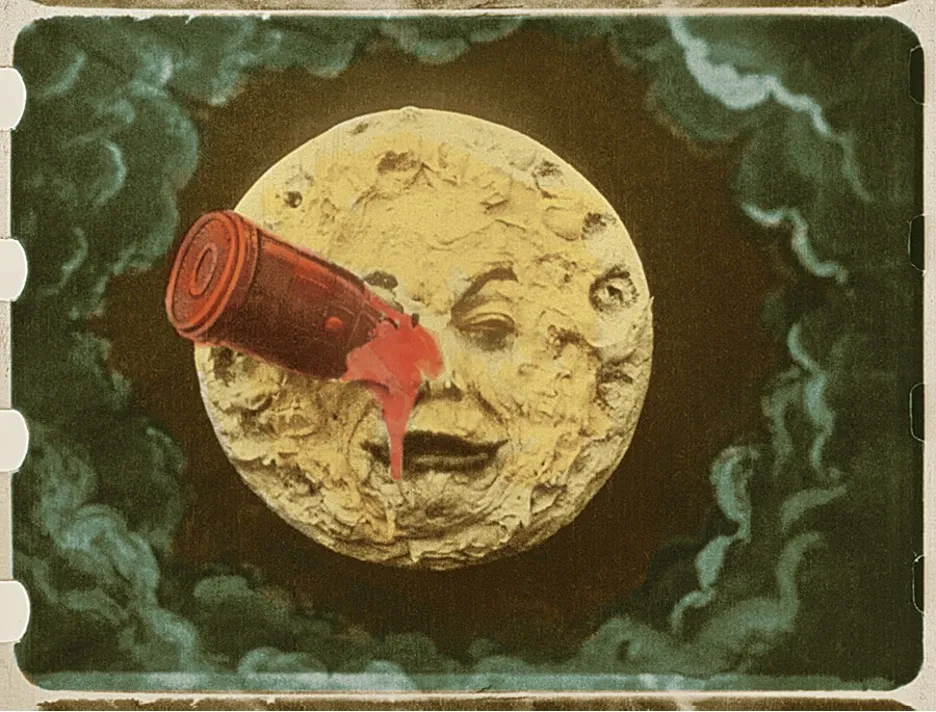
The three-year old had no rocks to offer. She promised us she did not eat the missing tiny, tumbled moonstone, but kept smirking after saying so.
And so, quarter 3 comes to a close this month, a little before the Equinox (when the Sun crosses the celestial equator) and before the Harvest SuperMoon (when North America is a closer to the moon than usual). Crystals and stars shaping human affairs remains far more palatable than the Fed, who has been toggling made up numbers to torture working people. The predictions of astrology also seem benign when our best (or at least, most prolific) tellers of tales work largely in the medium of finance. The crystals however, cannot transcend the malignancy of contemporary human economics (per excellent reporting by TNR). A large portion come from industrial mining that generates massive amounts of toxic waste, dangerously exploits labor, and sometimes uses profits to fund genocide.
There have been many apocalypses, there are many to come.

Anarchy and Healthcare:
In May, I went back to clinical work after a sabbatical, a locums position in an HIV/STD clinic. It’s a lot of sex and drugs, which is kind of my home. I have been working in this field in some form or another since I started at the Berkeley Free Clinic in a church basement. The BFC's leadership were charming and grizzled, having gotten their start, not in medical or nursing schools, but as field medics during the Vietnam War. Battlefield medicine was quite useful in the domestic front, where friends were abandoned when diagnosed with AIDS, tear gassed in protests, or overdosed on heroin.
Scottasaurus was this huge, glowering middle-aged man, like 6’4 at least, with a bigass beard and long hair, who always wore black. Scottosaurus and I (then a neurotic 19-year-old) connected over science fiction, and we had long ambling conversations about Neil Gaiman, anarchists, anti-capitalist feminist theory, workers collectives and the history of the Diggers. He was argumentative, detail oriented, and condescending. He was also deeply knowledgeable and caring. The whole clinic attracted a fascinating motley crew of workers. I don’t think I fully appreciated that a bunch of pragmatic radicals would spoil me with what was possible: people taking care of each other without bullshit. I went on to an acculturation into the professional managerial class, chasing bourgeois acceptance, bureaucracies, colonial saviorism, the hypocrisies of the Obama era—so it was good to have a root. Scottosaurus died much too young from complications of Hepatitis C, while I was still in residency. He is a patron ancestor to the many he mentored, whether he wanted to be that or not.

Bills and student loan payments motivated me back to a job, despite burnout. Emotional labor is still hard, especially in caring for people living under-resourced lives. But paid work that is useful—that feels not terrible! Antibiotics for gonorrhea. PrEP for the fancy gay cruise. A dentist. Clean needles. A food pantry. Sensible hours, admirable coworkers, healthy boundaries. Bread and Roses. It’s no simple thing. It’s never enough. But there it is.
Like many people, my main career goal has evolved to the American Dream of not working. And by that, I mean, do the work I want to do. And most people like to do meaningful work! Truly. In contrast to the insistence otherwise of a malevolent system (that profits from rendering workers precarious, debt-ridden, dependent on employer-healthcare-insurance, enough to coerce them into generating profits). Most people don’t like to do bullshit work.
Most people like to care for things: plants, animals, children, elders, neighborhoods, congregations, old cars, dinner parties. Or maybe they don’t, I don’t care. Let people tell stories and do drag shows and shoot the shit and just exist as a force of nature and be cared for. It has been an extremely efficient system that has helped us survive for a long time.
The late anthropologist David Graeber argued all that and that the labor revolution will come from those performing care labor. He has written, “There is a reason why the ultimate bourgeois virtue is thrift, and the ultimate working-class virtue is solidarity,” and on his own working class background, “We were constantly being told that work is a virtue in itself – it shapes character or somesuch – but nobody believed that. Most of us felt work was best avoided, that is, unless it benefited others. But of work that did, whether it meant building bridges or emptying bedpans, you could be rightly proud. And there was something else we were definitely proud of: that we were the kind of people who took care of each other.”
School of the Alternative:
Black Mountain, North Carolina is a tiny town in the Swannanoa Valley of Blue Ridge Mountains. From 1933 to 1957, it was the home of The Black Mountain College, founded by a coterie of influential artists and intellectuals that shaped American art for almost a century so far. It was a small utopic school built on John Dewey’s model of education with art at its core, that reduced hierarchy and gave students immense intellectual freedom.
At its site, the School of the Alternative (SotA) hosts its yearly residency. I was ecstatic to have my proposed class accepted, based on my obsession with narrative structure. Like its radical predecessors, the school facilitates equitable, multi-direction pedagogy and co-creation. It is an antidote to elite institutional spaces, spaces that may trade in the pieties of innovations and justice, but fundamentally must operate as handmaids of the ruling class: propping up its exclusivity, enforcing its mores, and laundering its profits as philanthropy. Unlike the original Black Mountain School, which, for all its radicalism, also had a track record of racism, classism, sexism and sexual harassment, SotA is another gorgeous collection of pragmatic radicals, demonstrating that of course it’s possible to make, share, teach art while trying not to be an asshole. The organization prioritizes the intersectional safety of marginalized voices, not symbolically, but materially, making space for artists to be themselves fully, for the work and for each other. It’s no simple thing. It’s never enough. But there it is.
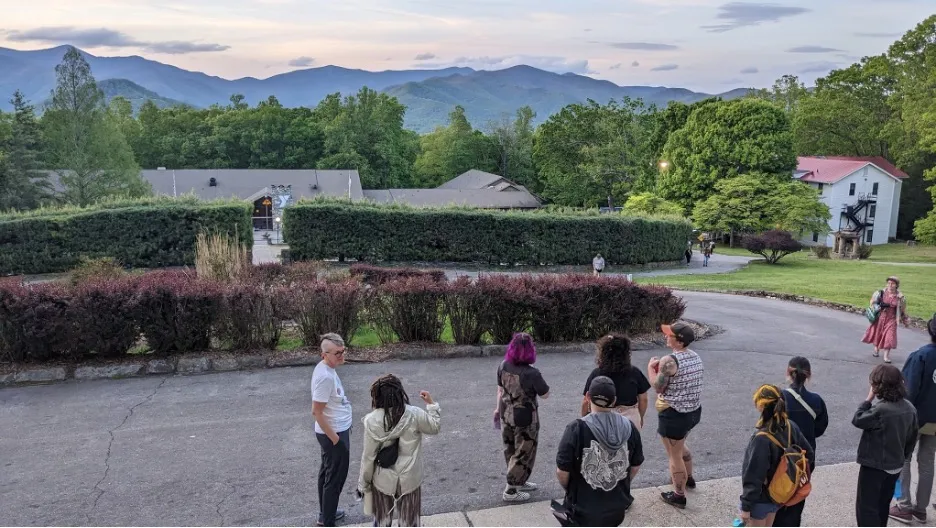
My first trip away from home in over 5 years, it was disorienting. I worked throughout the pandemic in healthcare, but I had forgotten how to interact with people in a normal way. Multiple times a week I found myself reveling, and just as often, weeping, often for unclear reasons. Once I wept because some coffee grounds had spilled, and by the time I brought back a rag to clean it, it was already clean. After years of childcare that far surpassed the capacity of our household, providing healthcare in a society uninterested in mitigating death or valuing our labor, of feeling like I was being boiled alive, I was in a space where people were warm and generous with their care. Many hands make light work. I have been lucky to be in many rooms of brilliant, caring people, but I don’t think I had experienced that specifically with so many working artists who were so present. My brain exploded and I have been rebuilding it ever since, in the best of ways.
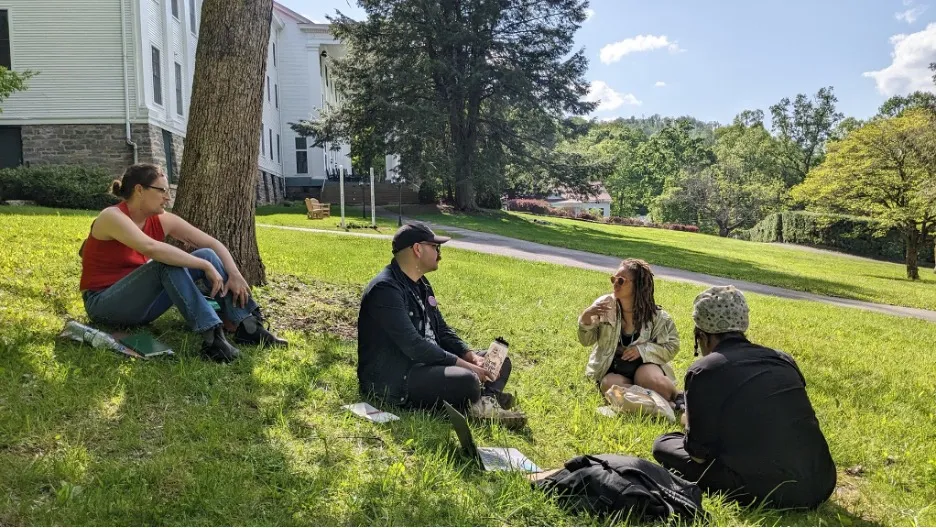
Currently SotA is fund raising for scholarships, which are key to their commitment to accessibility, please donate if you can, they are doing the critical work of making the revolution irresistible.
Kenyon Review Writer’s Residency:
The Kenyon Review was founded not so long after the Black Mountain College, in 1939, in Kenyon College, Gambier, OH. Similarly, it has an affiliation with a who’s who of historically influential literary artists. And yes, it did receive early funding from the CIA, glad you asked. The journal has launched several summer writing workshops, and I was grateful to attend the nonfiction workshop led by Grace Talusan.
When I had flown home from North Carolina to St. Louis the month before, my car got stuck inside the airport parking lot. I waited over an hour for someone to come out and fix the ticket booth. They never did. A shuttle bus driver helped me escape. I made it home on Mother’s Day, but the kids had already gone to bed—a minor but pointed anguish. This time I would drive from St. Louis to Gambier, bypassing airplanes and airports. I would be in full control.
LOL. It was fine, but I arrived very late. Gambier is on Eastern Standard Time, not Central, despite being in Ohio, which is centrally located. This arbitrary organization of time and space, is related, if you recall, to empire, longitude etc. Once I arrived, they had run out of dorm keys. At some point, somewhere, I had an allergic reaction, a splotchy rash on my face which then progressed, after I ignored it & applied routine skincare, to a chemical burn. On my face. The one I had to show. To people! My phone camera broke and I dropped my eyeliner in an air conditioning grate. It seemed foreboding to lose one’s war paint.
But it was fine! Amazing, even. Hanging out with hundreds of talented writers was extremely inspiring and nourishing! At some point this summer, influenced by poet-teachers, poetry makes sense?! Or, it makes sense in its not making sense, in that it makes sense that there are many other ways of making sense, besides the conventions of argument. Sometimes I had to go lie down to process this. In any case, without a phone camera I had to live in the moment, which was not to my taste.
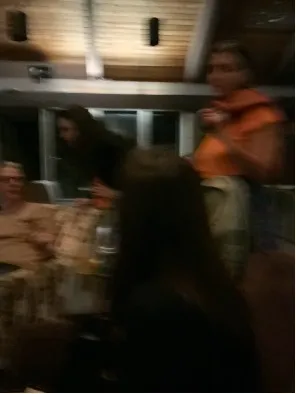
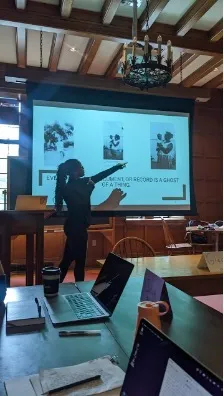

Photo 1: my camera phone worked intermittently and poorly, here are the nonfiction writers mingling with poets. Photo 2: via ipad, Christel Victoria Roach, Peter Taylor Fellow, teaching in workshop led by Grace Talusan. Photo 3: me reading a short work, photographer my classmate, though I am not sure which one! (ty!!)
(My face is mostly better)
It was less of a respite from the institutional – Kenyon Review and related conferences are at the heart of the prestige apparatus—but it was still a space shaped by generosity and care. As a generative workshop, vulnerability was built in. The space was deliberately cultivated by Grace’s thoughtful pedagogy and held with care by brilliant, caring workshop mates. It was a space to stumble around with craft and be real with our stories. It’s a humbling gift, to have one’s own shy rando drafts given serious attention by perceptive, creative and skillful people.

Links, announcement, notes
An extremely brief list of some things I love
Schooling
- The School of the Alternative is fundraising. Give if you can! Apply to go next spring!
- Belated, but you could still sign up for Zoe Tuck’s amazing Ghoul School! Zoe’s classes and the community she thoughtfully cultivates can help you connect with poetry! Did you know about poetry??
- Beth Pickens is my art guru, she has many accessible treasures, including books, podcasts, monthly club, and more
- I took an individualized book review class from Janessa Abrams and it was amazing, even though I have not turned in my overdue draft yet
- Editor David O’Neill is extremely good at editing and teaching, highly recommend!
- I only just started Chole N. Clark’s course on Monster Theory but so far really enjoying!
Listen
All episodes of Country of Dust are out now!
Danielle Hayden is doing a reading! (registration)
Read
Betsy Mikel’s newsletter on the architecture of home and memory
JP Legarte Review of Flare, Corona
Kit Carlson “Apology”
Tracy Abeyta, “The No Come Down”
Grace Talusan’s memoir The Body Papers
Jason P. Burnham’s microfiction “Egg Disputes Beneath the Desert’s Quietest Erg”
Anri Wheeler “My Mother Was Also A First Mermaid of Color”
Flavía Monteiro, “The Holes it Takes to Fill a Dolphin-Shaped Balloon.”
Suggestions, tyrades, requests to remove your name or photos, tangents, reading recommendations, invitations to tea, all are welcome.
Happy fall, D